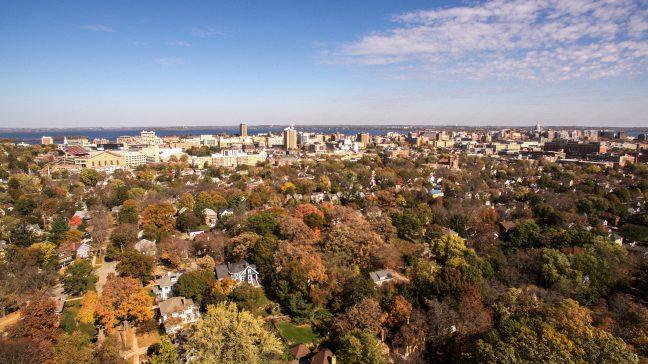In this day and age, the United States is a predominantly urban society, however, cities can be difficult places to live for the poor. Although decades after segregation officially ended, its effects are still seen in where people live. Wisconsin is no exception to these problems, so how can we make our cities more inclusive places?
Looking first at Madison, Mayor Paul Soglin has been seen by some as too harsh on the homeless, having proposed ordinances to prohibit sleeping outside during the day downtown and panhandling on roadway medians. On the surface, this seems like the opposite of inclusive. It is important to recognize, however, that efforts to curb the negative behavior of a small group make cities more welcoming to majority of people going about their day.
The visible homeless population that loiters around the Veterans Museum during the day, getting into fights and leering at passersby are not simply needy people who could just be helped with more resources. I’ve been homeless here, and have known some of these people. Those who want to improve their lives have more important things to do than cause trouble for others.
For those who do have a place to live, however, Madison’s relative lack of affordable housing is a problem. More than a decade ago, the City of Madison adopted a program called Inclusionary Zoning in an attempt to increase the affordable housing stock. It imposed a requirement to add 15 percent below market rate units to new developments, but was supposed to alleviate the added costs by allowing developers to exceed normal zoning restrictions.
It was a disaster. When projects got proposed, the neighborhoods often opposed them for not conforming to the neighborhood plan, and developers would often ultimately be denied the exemptions. Even when constructed, the affordable units had a reputation of being difficult to actually purchase. After only two years, Inclusionary Zoning was scrapped.
Even now, overly restrictive zoning codes and neighborhood plans designed to prevent multi-family homes from being built or existing single-family homes from being converted only delay the inevitability of change, and push many of Madison’s poor into isolated areas, far from basic amenities. On the bright side, Madison has recently opened the door for homeowners to build accessory dwelling units — a smaller, separate home on the property that can then be rented out —though only time will tell whether many take up this opportunity.
Compared to Madison, though, Milwaukee and its suburbs have a big problem with inclusivity. A 2012 study by the conservative think tank Manhattan Institute, found Milwaukee to be the most segregated metropolitan area in the United States. Like many places in the Midwest, Milwaukee has a history of explicitly discriminatory housing codes, and many neighborhoods downtown were subjected to redlining. These practices, however, were outlawed in 1968. Segregation has declined in Milwaukee since the 1970s, but not by nearly as much as other American cities.
New homeless shelter a step in the right direction, but more must be done
What makes Milwaukee different? Less gentrification, for a start. While it has its charms, with high taxes and one of the highest crime rates in the country, Milwaukee is hardly the ideal place to move to. Some neighborhoods, like Bayview and Riverwest, are attracting young, college-educated white people back to the city. While gentrification is often regarded as some kind of evil that must be resisted — where colonizers come in to destroy the unique character of the neighborhood — a process that brings badly needed resources and increased diversity should be welcomed.
If we want to make our cities more inclusive and better places to live, we need to insist on policies that reduce crime and nuisances, which make life worse for everyone else and to guard against making it difficult for newcomers to move into a neighborhood.
Amanda Love ([email protected]) is a senior majoring in mathematics.





















